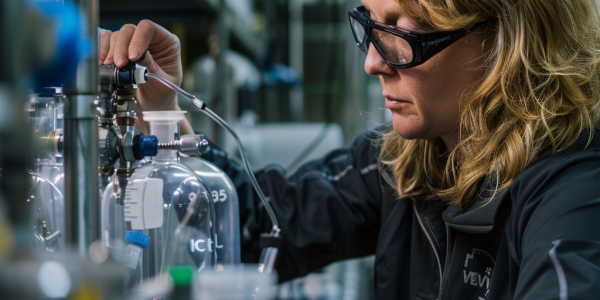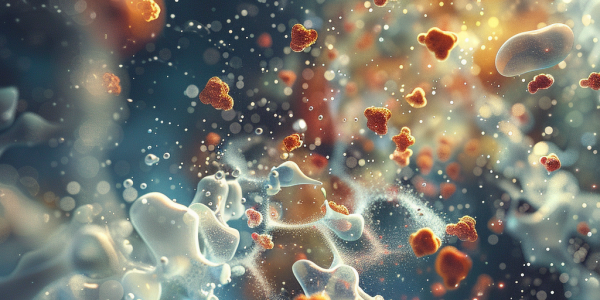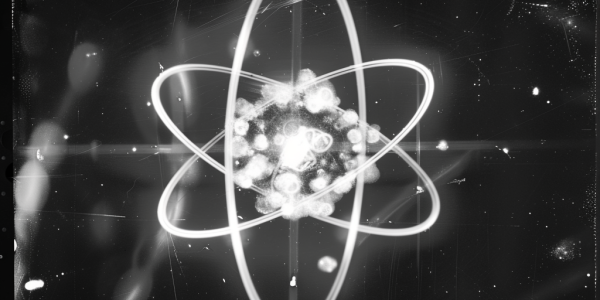Study Reveals Pathways to Low-Temperature Formation of Pyridine and (iso)quinoline
A recent study in Nature Astronomy reveals the gas-phase formation of pyridine and (iso)quinoline through neutral-neutral reactions, shedding light on the origins of prebiotic molecules in extraterrestrial environments. Researchers identified key reactions leading to the synthesis of these aromatic molecules, offering groundbreaking insights into the formation of life-building blocks in our Galaxy.
Mysterious Disappearance of Water on Venus Linked to Methanaldehyde Ion
Recent research suggests that the molecule HCO+ may be responsible for the disappearance of water on Venus, transforming the planet into a desert wasteland. Scientists from the University of Colorado at Boulder propose that HCO+ evaporating into space is depleting Venus’ water reserves, leading to its arid conditions. Future missions like VERITAS and DAVINCI are needed to study these molecules further and understand the mechanisms behind Venus’ water loss.
Chemists Create Highly Reactive Chemical Compound After 120-Year Stump
Chemists at the University of Minnesota Twin Cities College of Science and Engineering have achieved a groundbreaking feat by creating a highly reactive chemical compound that has stumped scientists for over 120 years. This significant discovery opens up possibilities for new drug treatments, safer agricultural products, and enhanced electronics, as reported in Science. The breakthrough in synthesizing N-heteroarenes, despite their high reactivity, was made possible through specialized experiments conducted under controlled conditions at the University of Minnesota. This novel chemical compound holds great promise for advancements in medicine, agriculture, and technology.
Revolutionary Approach to Reusing Captured Carbon Developed by Georgia Tech Engineers
Engineers at Georgia Tech have developed a groundbreaking approach to reusing captured carbon, making it more cost-effective and energy-efficient. Their new electrochemical reactor seamlessly integrates into direct air capture systems, transforming CO2 into valuable raw materials like plastics, chemicals, and fuels. This advancement significantly reduces costs and energy demands, enhancing the viability of combating climate change. The innovative design eliminates the need for expensive separation processes, streamlining the carbon capture process and reducing associated costs.
Revolutionizing Green Hydrogen Production with Sustainable Catalysts
Researchers at the RIKEN Center for Sustainable Resource Science in Japan have developed a custom-made catalyst that has revolutionized the extraction of hydrogen from water, resulting in a nearly 4000% increase in its lifetime. This breakthrough offers a more sustainable and long-lasting solution for hydrogen-based energy systems, addressing the limitations of rare earth metals like iridium and paving the way for a more environmentally friendly approach to hydrogen production.
Groundbreaking Discovery: Peptides Found to Form on Cosmic Dust Particles, Challenging Previous Beliefs
Recent research challenges previous beliefs about the formation of life’s building blocks in space, as peptides have been found to form on cosmic dust particles even in the presence of water. Dr. Serge Krasnokutski and his team made a significant breakthrough by demonstrating that water molecules on dust particles do not hinder peptide formation. This groundbreaking discovery opens up new possibilities in astrobiology and astrophysics, suggesting that essential organic compounds like peptides could originate in space.
Scientists Capture First-Ever X-ray Image of Single Atom, Opening New Possibilities in Atomic Research
Scientists have achieved a groundbreaking feat in atomic research by capturing the first-ever X-ray image of a single atom. This advancement allows for the identification and measurement of individual atoms’ chemical states, offering unprecedented insights into the atomic world. The study opens up new possibilities for studying atoms and their behaviors, with potential impacts on environmental and medical sciences. This milestone in atomic research paves the way for transformative discoveries in understanding the fundamental building blocks of matter.
EPFL Researchers Unravel Quantum-Mechanical Effects Behind Photoluminescence in Thin Gold Films
EPFL researchers have made a groundbreaking discovery in the field of nanotechnology by developing a comprehensive model that unravels the quantum-mechanical effects behind photoluminescence in thin gold films. This discovery has the potential to significantly impact the development of solar fuels and batteries. By studying the nanoscale behavior of electrons as they absorb and re-emit light, researchers can gain valuable insights into semiconductor properties and use them to characterize electronic processes, such as those within solar cells.
Unraveling the Mysteries of Space Chemistry with Coulomb Crystals
Discover how Coulomb crystals are revolutionizing the study of interstellar chemistry in this groundbreaking research effort. By simulating ISM conditions, researchers are uncovering the mysteries of cosmic chemical evolution and shedding light on the diverse reactions occurring in the ethereal realm of interstellar space.
New Paths to Optimize Electrochemical Processes
Scientists have found new paths to steer and optimize electrochemical processes, essential for the transition to renewable energies. The discovery of new ways to fine-tune electrochemistry opens up exciting possibilities for the future of renewable energy and sustainable chemistry.










